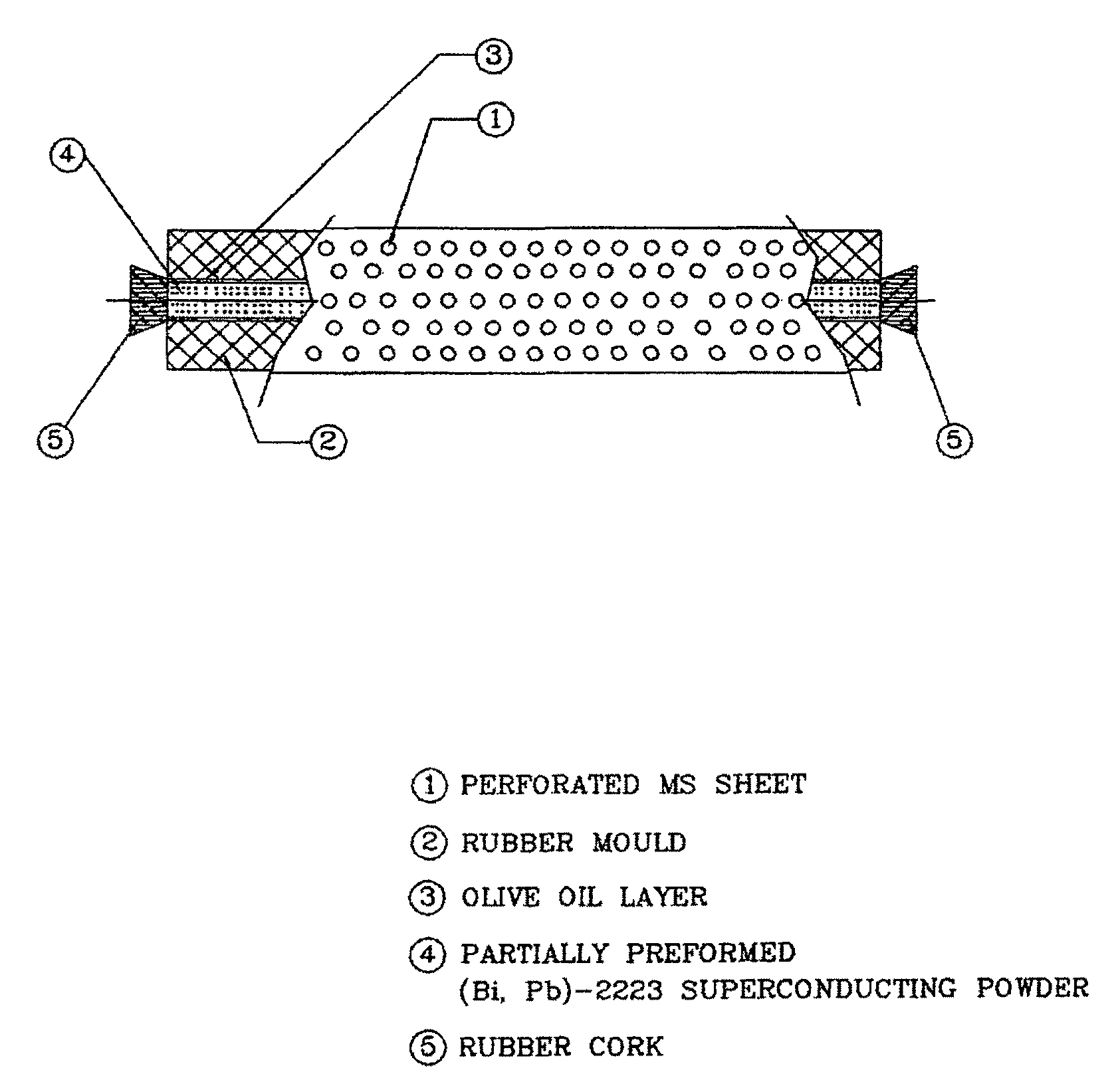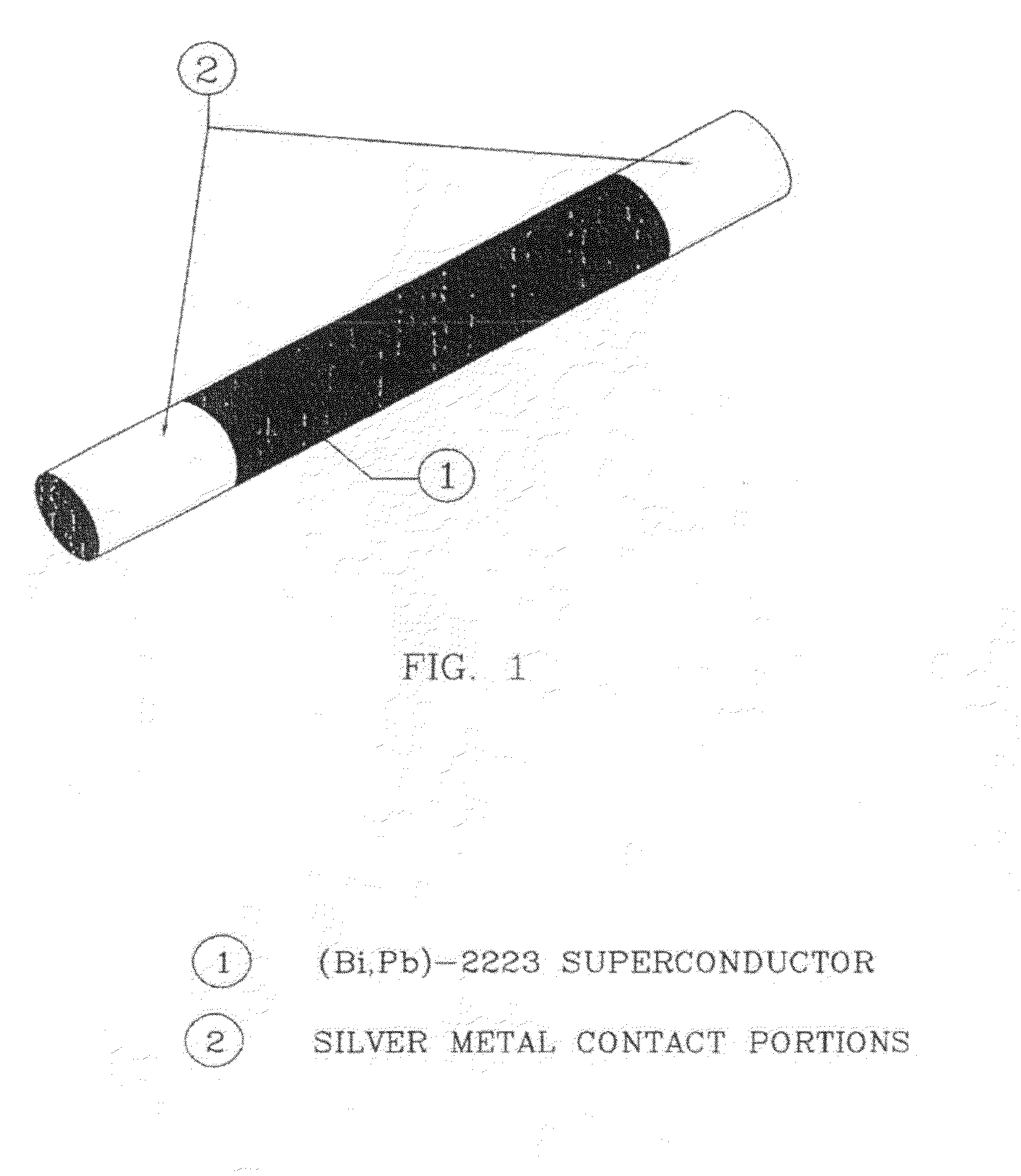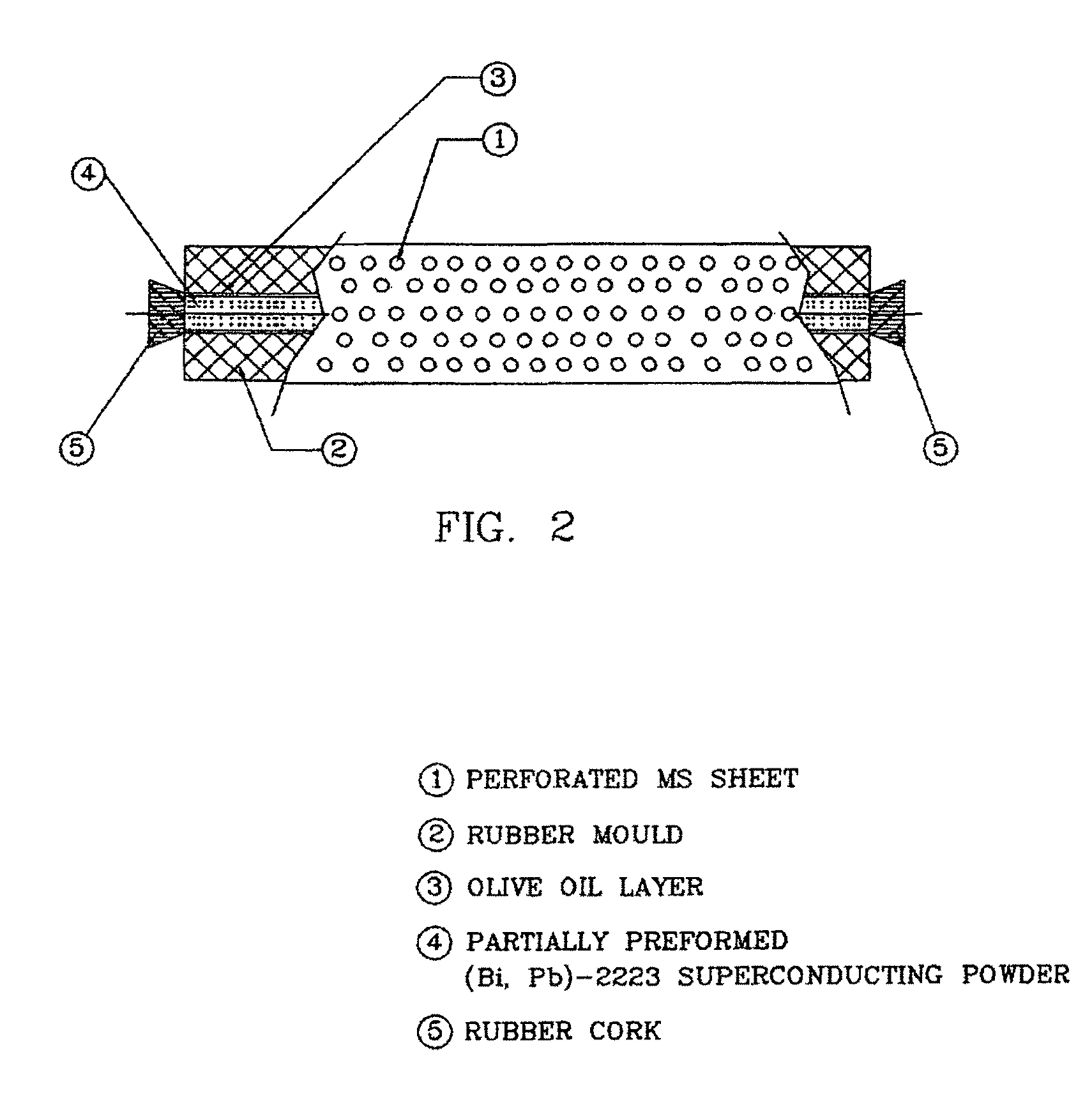Process for the preparation of oxide superconducting rods
a superconducting rod and oxide technology, applied in the field of preparation of oxide superconducting rods, can solve the problems of limiting their frequent use, poor mechanical properties, and serious power loss of crycoolers and loss of helium gas as refrigerant due to heat penetration
- Summary
- Abstract
- Description
- Claims
- Application Information
AI Technical Summary
Benefits of technology
Problems solved by technology
Method used
Image
Examples
example-1
[0069]Precursor powder was prepared by weighing each raw material nitrate powder of the constituent elements Bi,Pb,Sr,Ca,Cu and Ag in mole ratio of 1.84:0.35:1.91:2.05:3.05:1.2. These were dissolved in double distilled water and spray dried. This spray dried powder was then introduced into a furnace preheated to 800° C. and calcined for 1 hour in air. The calcined powder was cold iso-statically pressed at a pressure of 200 MPa into a tube of length (L) 200 mm and of outer diameter (OD) of 50 mm and inner diameter (ID) of 48 mm. Then this tube was sintered at 830° C. in air for 25 hours followed by crushing and mixing to obtain partially preformed tube powder material.
[0070]The partially preformed tube powder (5.8 gm) was then filled in a flexible rubber mould (I D=4 mm, OD=7 mm, L=150 mm) wrapped with a perforated metal sheet and one of the ends of the rubber mould was closed with a rubber cork. After filling of the sintered tube powder, other end of the mould was also closed with a...
example-2
[0073]Precursor powder was prepared by weighing each raw material nitrate powder of the constitute elements Bi, Pb, Sr, Ca, and Cu in mole ratio of 1.84:0.35:1.91:2.05:3.05:1.2. These were dissolved in double distilled water and spray dried. This spray dried powder was then introduced into a furnace preheated to 800° C. and calcined for 1 hour in air. The calcined powder was cold iso-statically pressed at a pressure of 200 MPa into a tube of length (L) 200 mm and of outer diameter (OD) of 50 mm and inner diameter (ID) of 48 mm. Then this tube was sintered at 830° C. in air for 25 hours followed by crushing and mixing to obtain partially preformed tube powder material.
[0074]The partially preformed tube powder (4.0 gm) was then filled in a flexible rubber mould (ID=4 mm, OD=7 mm, L=150 mm) wrapped with a perforated metal sheet and one of the ends of the rubber mould was closed with a rubber cork. After filling of the sintered tube powder, other end of the mould was also closed with a ...
example-3
[0077]Precursor powder was prepared by weighing each raw material nitrate powder of the constitute elements Bi, Pb, Sr, Ca, and Cu in mole ratio of 1.84:0.35:1.91:2.05:3.05:1.2. These were dissolved in double distilled water and spray dried. This spray dried powder was then introduced into a furnace preheated to 800° C. and calcined for 1 hour in air. The calcined powder was cold iso-statically pressed at a pressure of 200 MPa into a tube of length (L) 200 mm and of outer diameter (OD) of 50 mm and inner diameter (ID) of 48 mm. Then this tube was sintered at 830° C. in air for 25 hours followed by crushing and mixing to obtain partially preformed tube powder material.
[0078]The partially preformed tube powder (2.8 gm) was then filled in a flexible rubber mould (ID=4 mm, OD=7 mm, L=150 mm) wrapped with a perforated metal sheet and one of the ends of the rubber mould was closed with a rubber cork. After filling of the tube sintered powder, other end of the mould was also closed with a ...
PUM
| Property | Measurement | Unit |
|---|---|---|
| temperature | aaaaa | aaaaa |
| temperature | aaaaa | aaaaa |
| diameter | aaaaa | aaaaa |
Abstract
Description
Claims
Application Information
 Login to View More
Login to View More - R&D
- Intellectual Property
- Life Sciences
- Materials
- Tech Scout
- Unparalleled Data Quality
- Higher Quality Content
- 60% Fewer Hallucinations
Browse by: Latest US Patents, China's latest patents, Technical Efficacy Thesaurus, Application Domain, Technology Topic, Popular Technical Reports.
© 2025 PatSnap. All rights reserved.Legal|Privacy policy|Modern Slavery Act Transparency Statement|Sitemap|About US| Contact US: help@patsnap.com



